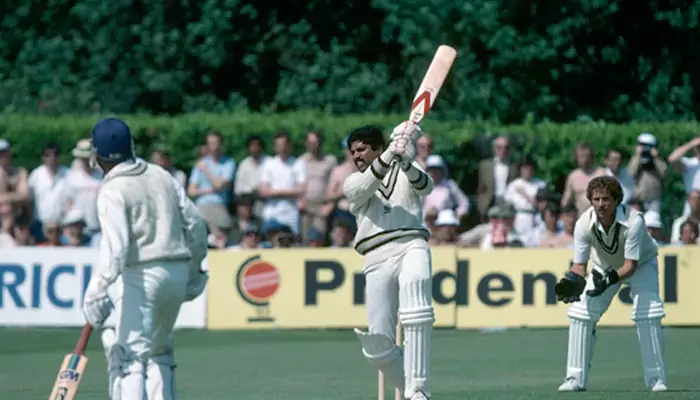
This August, we revisit a match that rewrote Indian cricket’s destiny—an innings of epic proportions, played in silence for the cameras and yet thunderous in its impact
August is a time when India remembers not just the freedom won in 1947, but also the achievements that came after. Some of these victories happened far from home, where Indian athletes carried the hopes of millions.
In 1983, in the quiet English town of Tunbridge Wells, Kapil Dev played one of cricket’s greatest innings. No television camera captured it, so only those present saw the moment that changed Indian sporting history.
India's 1983 World Cup campaign was hanging by a thread. In their group stage match against Zimbabwe at Nevill Ground, Tunbridge Wells, India found themselves in deep trouble—five wickets lost for just 17 runs in 9 overs chasing to stay alive in the tournament. The dream of progressing appeared lost.
Kapil Dev was just 24 and leading India for the first time at a World Cup. He came in to bat at number six with the score teetering at 17 for 5. What happened next was not just an innings but a rescue mission against all odds, as he formed crucial lower-order partnerships to keep India in the game.

Credit: The Gurdian
Because there is no footage, myths have grown over the years, especially the story about a BBC strike. The real reason was simpler. Four matches were played that day. Two of them, West Indies vs. Australia at Lord's and England vs. Pakistan at Old Trafford, were shown live.
Another match, New Zealand vs. Sri Lanka, had only basic single-camera coverage. India’s game against Zimbabwe was seen as the least important because both teams had struggled earlier. No cameras were sent. What seemed unimportant at the time became a turning point in Indian cricket.
Kapil started carefully, choosing not to attack right away and instead steadying the innings with Syed Kirmani for the ninth wicket. He reached his half-century in 72 balls and his century in exactly 100. Then everything changed. In the last 38 balls, he scored 75 runs, hitting huge sixes that flew into the tents and out of the ground.
His Slazenger WG bat, built for power, looked like a sledgehammer in his hands. He finished on 175 not out, the highest one-day score then. India scored 266 for 8; no other batter passed 25.

Credit: The Sports Rush
With the bats' work done, India turned to their fielders and bowlers. Madan Lal's sharp throw from the boundary ran out a Zimbabwe batter; Kapil himself took a one-handed catch at gully. Zimbabwe, despite Kevin Curran's 73, were bowled out for 235, 31 runs short of India's 266 for 8.
This victory was more than just earning points. It gave India the motivation they required. Soon after, they defeated Australia, then England, and ultimately the formidable West Indies in a final that remains one of cricket’s greatest upsets. Kapil’s innings helped India to regroup and paved the way for them to win the first-ever Cricket World Cup, and that too on British soil.

Credit: India TV News
Kapil Dev finished the 1983 World Cup with 303 runs, averaging over 60 and scoring at a strike rate close to 109, which was outstanding for that time. He also took 12 wickets at less than three runs an over. Still, his 175 not out is the moment everyone remembers, a masterpiece kept alive in memories, photos, and stories.